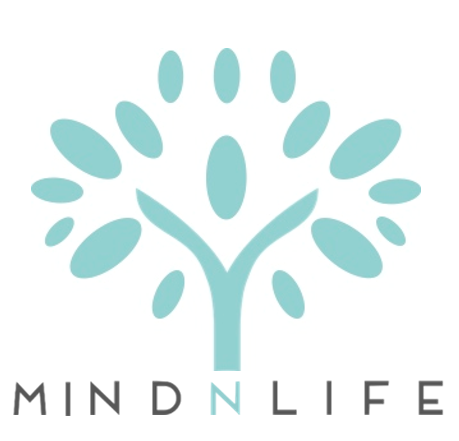In the landscape of therapeutic interventions, the term “boundaries” has gained widespread popularity. In this article, Dr Quratulain Zaidi, of MindNLife explains why she’s reluctant to get on the bandwagon.
If you’ve spent any time in therapy with me, you’ve probably heard me say, “I don’t like to use the word ‘boundaries’. It’s not that I’m against setting limits, but this word has become so overused, almost like a badge of emotional maturity. Especially during the COVID era, it’s been everywhere – social media, books, podcasts – everyone seems to be shouting about boundaries: setting them, communicating them, enforcing them, respecting them. It’s like the hottest topic in town.
So why do I find myself reluctant to use this popularised term? It’s because boundaries, as they’re commonly talked about, don’t have scientific roots or research-based evidence as a treatment plan in psychology, despite what many popular authors of self-help books lay claim to. They make it sound like you need special techniques, invisible to the naked eye, to implement them. Suddenly, everything is explained as a matter of boundaries, and they slip into conversations where they might not even belong.
People as “property”
And, let’s be honest, boundaries are everywhere. The definition of “boundaries” varies, but it historically links to property. Today, the concept often borrows from land ownership imagery, treating individuals like isolated plots of land.
In contrast to this oversimplified view, psychoanalysis and historical research in psychology rarely delves into the concept of boundaries. Rather, the focus has traditionally been on the self’s “defences” or the delicate nuances in the mother-child relationship during the process of individuation.
Psychoanalytic literature underscores the inadequacy of applying property logic to human relationships. The intricate interdependence within social systems challenges the notion that individuals can be treated as isolated entities with distinct boundaries.
We’re not individualised properties. We live in a world designed to push us into dependence on systems and each other. Applying property logic to friends, family members and colleagues just doesn’t make sense.
In the world of popularised versions, boundaries have taken on a life of their own. They relate to being responsible for what’s in your emotional “yard” – thoughts, feelings, actions, opinions. But rather than being plots owned by landowners, we’re human beings in interdependent systems, neither good nor bad, just reality.
The multifaceted nature of human relationships and societal interdependence doesn’t do justice to the use of such simplistic definitions, however. On social media, boundaries slip out of bounds, with experts giving wildly different accounts of what they even partition. The scientific community in psychology emphasises the complexity of defining boundaries in a way that encompasses the intricacies of human behaviour, societal norms and the interplay of emotions within relationships.
In the 1980s, boundaries showed up in court cases about domestic violence. Experts described how abuse breaks down a person’s boundaries, making it tough to enforce limits. But even in this context, boundaries can lean into victim-blaming territory. The comforting fiction that using the right words can shield you from exploitation just doesn’t hold water. You can’t control it all, and thinking you can might lead you to blame others for being exploited.
A different approach
This is where I part ways with the boundary hype: I replace it with “limit setting”. Having the right to your own time, space, feelings, thoughts and beliefs – that’s the key. It’s about being assertive without the guilt. It’s a language and system that takes away from being a victim; Shifting the narrative from “boundaries” to “limit setting” provides a more empowering framework. This perspective acknowledges an individual’s right to their own time, space, feelings, thoughts and beliefs, fostering assertiveness without succumbing to guilt. While boundaries may imply a rigid demarcation, limit setting aligns more closely with the dynamic nature of human relationships. It recognises the fluidity and negotiation inherent in personal boundaries, steering away from the notion of individuals as isolated entities.
It’s easier said than done, though – I understand this. Preserving a sense of self while setting limits involves cultivating self-awareness, practicing effective communication, and developing the ability to assertively say no. Here are some of the ways you can approach those things.
#1 Communicate effectively
What did you hear? Effective communication is about what the other person heard, and being sure they heard what you meant is a skill that takes time to develop.
Active listening: While being able to express your needs effectively, it is also important to cultivate the skill of active listening to understand others’ perspectives while maintaining clarity about what’s acceptable to you.
Having the right to your own time, space, feelings, thoughts and beliefs – that’s the key.
Use non-defensive language: When expressing limits, avoid defensive language. Focus on communicating your needs rather than justifying or apologising for them.
#2 SAY NO
It’s tough, and that inner critic can rear its head, but saying yes to everything breeds resentment. Practice saying no and remind yourself it’s okay.
Employ gradual limit setting: Start by setting small limits and gradually progress to more significant ones. This incremental approach can make the process more manageable.
Identify your inner critic: Recognise and challenge the inner critic that may emerge when setting limits. Understand that it’s normal to prioritise personal well-being and that saying no is a healthy part of self-care.
#3 Be clear about your expectations and needs
Reflect on personal needs: Take time to reflect on and identify your top three most important needs in different relationships, such as with a partner, children, friends or family. When did you last consider your needs from these different sources? Many of you probably haven’t. Yet if you don’t know what you need, how can you expect others to know?
Express expectations clearly: Clearly articulate your expectations and needs to others. Use specific language to avoid misunderstandings, and be open to discussing and negotiating collaboratively.
Encourage open communication: Foster an environment where open communication is encouraged. Encourage others to express their needs and expectations, creating a reciprocal and understanding dynamic.
To find out more how therapy can help you achieve your full potential and improve your mental health, please get in touch.







